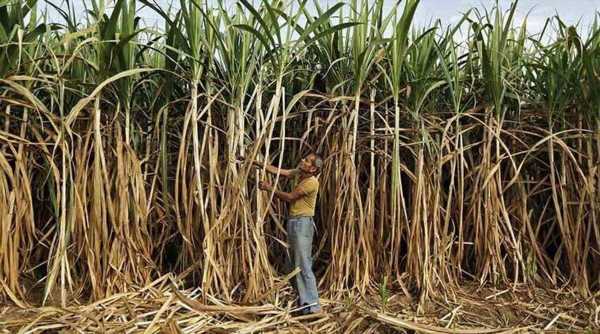According to experts, the CO-0238 variety that covers 60 per cent area in Punjab can be saved still if farmers adhere to prevention methods.
Cloudy weather coupled with high humidity and heavy rain over the past couple of days has invited deadly ‘red rot’, which is also called cancer of sugarcane crop, in Punjab. Currently, the disease has started appearing in major sugarcane growing districts of Punjab like Gurdaspur, Hoshiarpur, Amritsar, Jalandhar, Pathankot and in some parts of Ludhiana.
Experts said that if such weather continues for few more days then disease can increase manifold as this is the most favourable weather for the rapid spread of red rot.
They added that if prevention fails then there is no way to stop the attack from spreading.
According to experts, the CO-0238 variety that covers 60 per cent area in Punjab can be saved still if farmers adhere to prevention methods.
If the attack is intense then red rot can wipe out entire standing crops.
It can reduce cane weight by up to 29 per cent and can cause loss in sugar recovery by 31 per cent. The epidemic situation of red rot needs immediate replacement of the affected varieties.
“We have surveyed over 50,000-acre area in 36 villages in Mukerian, Pathankot, Shri Hargobindpur, Gurdaspur, Kahnuwan, Narto Jaimal Singh, Ajnala and Ludhiana and the disease was noticed in the crop at several places,” said Punjab Cane Commissioner Gurvinder Singh, adding that ‘red rot’ is caused by a fungus and it is difficult to recognise the disease in its early stages in the field.
“The first symptoms of the disease are seen after the rainy season when the plant stops growing and sucrose starts forming. The disease appears from July till the crop is harvested. As harvesting starts in November and it continues till March depending upon the varieties,” said Dr Amrik Singh, Assistant Cane Development Officer, Gurdaspur.
“Initially, the affected stalks show orange to yellow discolouration in the top two to three leaves. Gradually the entire foliage turns yellowish and dry. Later, the whole clump dries up. On splitting open the cane, the tissue is found to be reddened but the discolouration is not uniform and is interspersed with white patches running across the width of the split cane. The affected cane emits the alcoholic smell,” said Dr Amrik Singh.
Apart from high atmospheric humidity (90 per cent), other major reasons for its attack included drought conditions during the initial growth phase, water-logged conditions of the soil, lack of cultural practices that result in the growth of weeds, continuous cultivation of the same variety in the field and presence of susceptible varieties in the surroundings are the major reason for its attack and fast spread.
Talking about its effect on the crop, experts said that it reduces 25-75 per cent sucrose in diseased cane as compared to the healthy cane, quality is poor and its mixing with healthy cane juice during crushing also spoils healthy juice, jaggery and there is a reduction in the recoverable sugar in the sugar mills.
The Cane Commissioner said that ahead of sowing they had advised farmers to take the control measures as prevention is the only solution against this disease.
“Disease-free seed treated with fungicide and kept at 52°C for 18 minutes in moist hot air treatment before planting is a must and farmers should not take this lightly. Also, the farmers are asked to avoid planting cane in the fields where the disease had attacked on the crop around one year back and use red rot-resistant varieties,” said the Cane Commissioner.
The affected crops must be ploughed up soon after harvesting and the next crop should not be sown in the same field.
Dr Amrik Singh said that going by its history red rot is one of the most widespread sugarcane diseases in the country and it has been a constraint in sugarcane production for the past 120 years in India and also South Asian countries.
Source: Read Full Article


